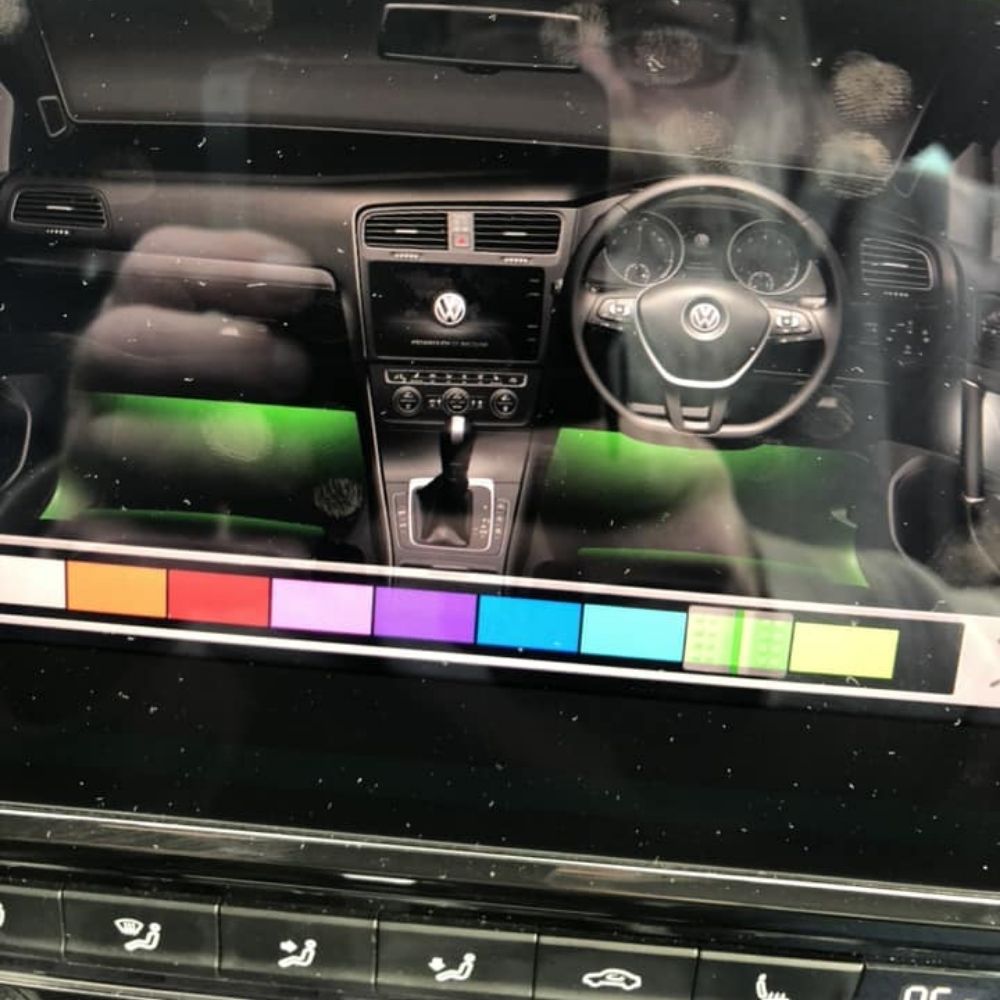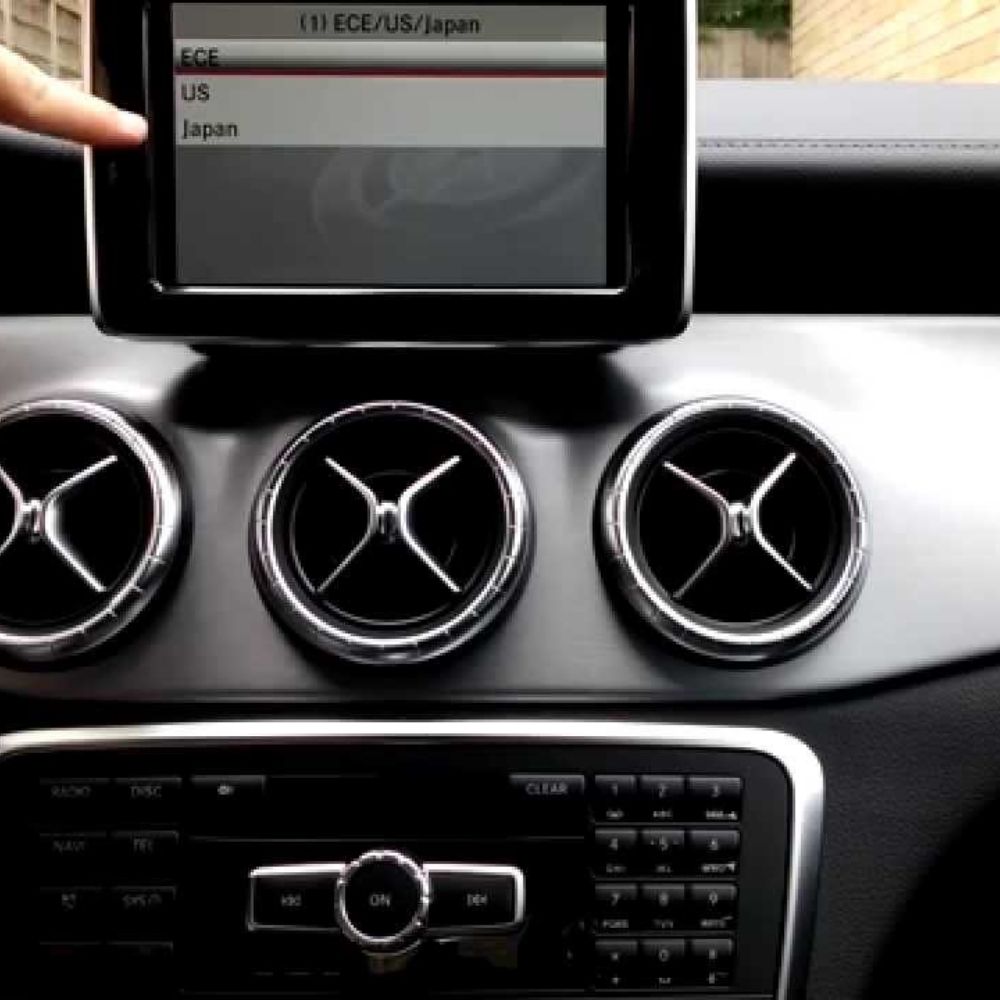
What Does Audi DTC P154500 Indicate and How to Fix It?
Contents
- 1. What is the Meaning of Audi DTC P154500?
- 1.1. Detailed Explanation of Throttle Actuator Control System
- 1.2. Symptoms Associated with DTC P154500
- 2. What are the Common Causes of Audi DTC P154500?
- 3. How to Diagnose Audi DTC P154500?
- 3.1. Initial Inspection
- 3.2. Retrieving and Clearing the DTC
- 3.3. Testing the Throttle Position Sensor (TPS)
- 3.4. Evaluating the Throttle Actuator Motor
- 3.5. Inspecting Wiring and Connectors
- 3.6. Checking for Carbon Buildup
- 3.7. ECU Diagnostics
- 4. What are the Steps to Fix Audi DTC P154500?
- 4.1. Replacing the Throttle Actuator Motor
- 4.2. Replacing the Throttle Position Sensor (TPS)
- 4.3. Repairing or Replacing Wiring
- 4.4. Cleaning the Throttle Body
- 4.5. ECU Repair or Replacement
- 5. How Does Carbon Buildup Affect the Throttle Actuator Control System?
- 5.1. Formation of Carbon Deposits
- 5.2. Impact on Throttle Performance
- 5.3. Preventing Carbon Buildup
- 6. What Tools are Needed to Diagnose and Repair Audi DTC P154500?
- 7. Why is Throttle Body Alignment Necessary After Repairs?
- 7.1. Purpose of Throttle Body Alignment
- 7.2. How Throttle Body Alignment Works
- 7.3. Symptoms of Incorrect Throttle Body Alignment
- 8. How to Prevent the Recurrence of Audi DTC P154500?
- 9. What are Other Related DTCs to Audi P154500?
- 10. How Can AutoExplain.com Help with Audi DTC P154500?
- 10.1. Remote Diagnostic Support
- 10.2. ECU Programming and Software Updates
- 10.3. Component Testing and Validation
- 10.4. Expert Technical Assistance
- 10.5. Training and Education
- FAQ: Audi DTC P154500
- 1. What does the Audi DTC P154500 code mean?
- 2. What are the common symptoms of the P154500 code?
- 3. What are the main causes of the P154500 code?
- 4. How do I diagnose the P154500 code?
- 5. What tools are needed to diagnose and repair the P154500 code?
- 6. Is throttle body alignment necessary after cleaning or replacing parts?
- 7. How can carbon buildup affect the throttle actuator control system?
- 8. How can I prevent the recurrence of the P154500 code?
- 9. What other DTCs might be related to the P154500 code?
- 10. How can AutoExplain.com assist in resolving the P154500 code?
Decoding the Audi Dtc P154500 diagnostic trouble code involves understanding its implications, common causes, and effective troubleshooting steps. The P154500 code in Audi vehicles often points to issues within the throttle actuator control system, impacting engine performance and drivability. Let’s explore in detail the nature of this code and practical solutions for resolving it, ensuring your Audi runs smoothly.
1. What is the Meaning of Audi DTC P154500?
The Audi Diagnostic Trouble Code (DTC) P154500 indicates a problem within the throttle actuator control system, often related to the throttle position control. This code signals that the engine control unit (ECU) has detected a discrepancy between the desired and actual throttle position.
1.1. Detailed Explanation of Throttle Actuator Control System
The throttle actuator control system is essential for regulating the amount of air entering the engine, which directly affects engine power and efficiency. It consists of several components:
- Throttle Valve: A butterfly valve in the intake manifold that opens and closes to control airflow.
- Throttle Actuator Motor: An electric motor that moves the throttle valve based on signals from the ECU.
- Throttle Position Sensor (TPS): Provides feedback to the ECU about the exact position of the throttle valve.
- Engine Control Unit (ECU): The brain of the system, processing sensor data and controlling the actuator motor to achieve the desired throttle position.
1.2. Symptoms Associated with DTC P154500
When the P154500 code is triggered, several symptoms may manifest:
- Reduced Engine Power: The engine may lack its usual power, especially during acceleration.
- Rough Idling: The engine may idle unevenly or stall.
- Hesitation During Acceleration: The vehicle may hesitate or stumble when accelerating.
- Check Engine Light: The malfunction indicator lamp (MIL) illuminates on the dashboard.
- Limp Mode: In some cases, the vehicle may enter limp mode to protect the engine, limiting speed and power.
2. What are the Common Causes of Audi DTC P154500?
Several factors can cause the P154500 code to appear in your Audi:
- Faulty Throttle Actuator Motor: The motor may be worn out or damaged, preventing it from accurately controlling the throttle valve.
- Defective Throttle Position Sensor (TPS): A malfunctioning TPS can send incorrect signals to the ECU, leading to inaccurate throttle control.
- Wiring Issues: Damaged, corroded, or loose wiring in the throttle actuator control circuit can disrupt communication between the components.
- Carbon Buildup: Excessive carbon deposits on the throttle valve can restrict its movement and affect performance.
- ECU Malfunction: Although less common, a faulty ECU can misinterpret sensor data or send incorrect commands to the throttle actuator.
3. How to Diagnose Audi DTC P154500?
Diagnosing the P154500 code requires a systematic approach to identify the root cause of the problem:
3.1. Initial Inspection
Begin with a visual inspection of the throttle body and surrounding components:
- Check for any visible damage to the throttle body, wiring, and connectors.
- Ensure that all connections are secure and free from corrosion.
- Look for signs of carbon buildup on the throttle valve.
3.2. Retrieving and Clearing the DTC
Use an OBD-II scanner to retrieve the P154500 code and any other related codes stored in the ECU. Record all codes and clear them to see if the P154500 code returns after a test drive.
3.3. Testing the Throttle Position Sensor (TPS)
The TPS is a critical component of the throttle control system. Testing its functionality is essential:
- Voltage Test: Use a multimeter to measure the voltage at the TPS connector. The voltage should vary smoothly as the throttle valve is opened and closed.
- Resistance Test: Measure the resistance across the TPS terminals. A steady and consistent resistance change should occur as the throttle valve is moved.
- Scan Tool Data: Use a scan tool to monitor the TPS data in real-time. Verify that the TPS readings are accurate and correspond to the throttle valve position.
3.4. Evaluating the Throttle Actuator Motor
The throttle actuator motor’s performance can be assessed through several tests:
- Visual Inspection: Check the motor for any visible damage or wear.
- Resistance Test: Measure the resistance of the motor windings. An abnormal resistance reading may indicate a faulty motor.
- Activation Test: Use a scan tool to activate the throttle actuator motor and observe its movement. The motor should respond quickly and smoothly to the commands.
- Voltage Test: Check the voltage supply to the motor. Ensure that the motor is receiving the correct voltage as specified by the vehicle manufacturer.
3.5. Inspecting Wiring and Connectors
Thoroughly inspect the wiring and connectors associated with the throttle actuator control system:
- Continuity Test: Use a multimeter to check the continuity of the wiring between the ECU, TPS, and throttle actuator motor.
- Voltage Drop Test: Perform a voltage drop test to identify any excessive resistance in the wiring.
- Connector Inspection: Check the connectors for corrosion, damage, or loose pins. Clean or replace any faulty connectors.
3.6. Checking for Carbon Buildup
Excessive carbon buildup on the throttle valve can impede its movement and cause the P154500 code to appear:
- Visual Inspection: Remove the air intake duct and inspect the throttle valve for carbon deposits.
- Cleaning: Use a throttle body cleaner and a soft brush to carefully remove any carbon buildup from the throttle valve and throttle body.
3.7. ECU Diagnostics
If all other components test within specifications, the ECU may be the cause of the P154500 code:
- Software Update: Ensure that the ECU has the latest software updates installed. Outdated software can sometimes cause communication errors.
- ECU Testing: If possible, test the ECU with a known good unit to see if the problem is resolved.
- Professional Diagnosis: Consult a qualified technician for further ECU diagnostics and potential repairs.
4. What are the Steps to Fix Audi DTC P154500?
Addressing the P154500 code involves targeted repairs based on the diagnosis:
4.1. Replacing the Throttle Actuator Motor
If the throttle actuator motor is found to be faulty, replacement is necessary:
- Disconnect Battery: Disconnect the negative terminal of the battery to prevent electrical damage.
- Remove Air Intake: Remove the air intake duct to access the throttle body.
- Disconnect Electrical Connector: Disconnect the electrical connector from the throttle actuator motor.
- Remove Mounting Bolts: Remove the bolts securing the throttle actuator motor to the throttle body.
- Install New Motor: Install the new throttle actuator motor, ensuring it is properly aligned and secured.
- Reconnect Electrical Connector: Reconnect the electrical connector to the throttle actuator motor.
- Reinstall Air Intake: Reinstall the air intake duct.
- Reconnect Battery: Reconnect the negative terminal of the battery.
- Throttle Body Alignment: Perform a throttle body alignment using a diagnostic scan tool to ensure the ECU recognizes the new motor.
4.2. Replacing the Throttle Position Sensor (TPS)
A defective TPS should be replaced to ensure accurate throttle control:
- Disconnect Battery: Disconnect the negative terminal of the battery.
- Disconnect Electrical Connector: Disconnect the electrical connector from the TPS.
- Remove Mounting Screws: Remove the screws securing the TPS to the throttle body.
- Install New Sensor: Install the new TPS, aligning it properly with the throttle shaft.
- Reconnect Electrical Connector: Reconnect the electrical connector to the TPS.
- Reconnect Battery: Reconnect the negative terminal of the battery.
- Throttle Body Alignment: Perform a throttle body alignment using a diagnostic scan tool.
4.3. Repairing or Replacing Wiring
Faulty wiring should be repaired or replaced to ensure proper communication within the throttle actuator control system:
- Inspect Wiring: Thoroughly inspect the wiring for any signs of damage, corrosion, or wear.
- Repair Damaged Wires: Repair any damaged wires by splicing in new sections of wire and using heat-shrink tubing to protect the connections.
- Replace Faulty Connectors: Replace any faulty connectors with new ones.
- Secure Wiring: Secure the wiring harness to prevent it from rubbing against other components and causing damage.
4.4. Cleaning the Throttle Body
Carbon buildup on the throttle valve should be removed to ensure smooth throttle operation:
- Disconnect Air Intake: Disconnect the air intake duct from the throttle body.
- Apply Cleaner: Spray throttle body cleaner onto a clean rag and carefully wipe away any carbon deposits from the throttle valve and throttle body.
- Manual Cleaning: Use a soft brush to gently scrub away any stubborn carbon deposits.
- Reinstall Air Intake: Reinstall the air intake duct.
- Throttle Body Alignment: Perform a throttle body alignment using a diagnostic scan tool.
4.5. ECU Repair or Replacement
If the ECU is found to be faulty, it may need to be repaired or replaced:
- Consult Technician: Consult a qualified technician for ECU diagnostics and repairs.
- ECU Replacement: If the ECU cannot be repaired, it may need to be replaced with a new or remanufactured unit.
- Programming: The new ECU will need to be programmed to match the vehicle’s specifications.
5. How Does Carbon Buildup Affect the Throttle Actuator Control System?
Carbon buildup can significantly impair the performance of the throttle actuator control system.
5.1. Formation of Carbon Deposits
Carbon deposits form as a result of incomplete combustion and the recirculation of exhaust gases. These deposits accumulate on the throttle valve and throttle body, restricting airflow and affecting throttle response.
5.2. Impact on Throttle Performance
Carbon buildup can cause the throttle valve to stick or bind, preventing it from opening and closing smoothly. This can lead to:
- Reduced Airflow: Restricted airflow can reduce engine power and fuel efficiency.
- Rough Idling: The engine may idle unevenly or stall due to inconsistent airflow.
- Hesitation: The vehicle may hesitate or stumble during acceleration.
5.3. Preventing Carbon Buildup
Preventive measures can help minimize carbon buildup in the throttle body:
- Regular Cleaning: Clean the throttle body regularly to remove any accumulated carbon deposits.
- Use Quality Fuel: Use high-quality fuel to ensure complete combustion and reduce the formation of carbon deposits.
- Maintain Air Filter: Replace the air filter regularly to prevent dirt and debris from entering the engine.
6. What Tools are Needed to Diagnose and Repair Audi DTC P154500?
Diagnosing and repairing the P154500 code requires a variety of tools:
- OBD-II Scanner: To retrieve and clear diagnostic trouble codes.
- Multimeter: To test the voltage and resistance of electrical components.
- Scan Tool: To monitor sensor data in real-time and perform throttle body alignment.
- Throttle Body Cleaner: To remove carbon deposits from the throttle valve and throttle body.
- Socket Set: To remove and install bolts and screws.
- Screwdriver Set: To remove and install screws.
- Wiring Repair Kit: To repair damaged wiring.
7. Why is Throttle Body Alignment Necessary After Repairs?
Throttle body alignment, also known as throttle adaptation, is necessary after performing certain repairs to the throttle actuator control system.
7.1. Purpose of Throttle Body Alignment
The throttle body alignment procedure ensures that the ECU accurately recognizes the position of the throttle valve. Over time, the ECU learns the characteristics of the throttle body and stores this information in its memory. When a new throttle actuator motor or TPS is installed, or when the throttle body is cleaned, the ECU’s stored data may no longer be accurate.
7.2. How Throttle Body Alignment Works
The throttle body alignment procedure resets the ECU’s learned data and allows it to relearn the throttle body’s characteristics. This ensures that the throttle valve operates correctly and that the engine performs optimally.
7.3. Symptoms of Incorrect Throttle Body Alignment
If the throttle body is not properly aligned, the following symptoms may occur:
- Rough Idling: The engine may idle unevenly or stall.
- Poor Throttle Response: The vehicle may hesitate or stumble during acceleration.
- Reduced Engine Power: The engine may lack its usual power.
- Check Engine Light: The P154500 code may reappear.
8. How to Prevent the Recurrence of Audi DTC P154500?
Preventing the recurrence of the P154500 code involves regular maintenance and proactive care:
- Regular Throttle Body Cleaning: Clean the throttle body regularly to prevent carbon buildup.
- Use Quality Fuel: Use high-quality fuel to ensure complete combustion and reduce the formation of carbon deposits.
- Maintain Air Filter: Replace the air filter regularly to prevent dirt and debris from entering the engine.
- Inspect Wiring: Regularly inspect the wiring and connectors associated with the throttle actuator control system.
- Monitor Performance: Pay attention to any changes in engine performance, such as rough idling or hesitation, and address them promptly.
9. What are Other Related DTCs to Audi P154500?
Several other DTCs may be related to the P154500 code and can provide additional insight into the problem:
- P0121: Throttle/Pedal Position Sensor/Switch A Circuit Range/Performance
- P0122: Throttle/Pedal Position Sensor/Switch A Circuit Low Input
- P0123: Throttle/Pedal Position Sensor/Switch A Circuit High Input
- P0221: Throttle/Pedal Position Sensor/Switch B Circuit Range/Performance
- P0222: Throttle/Pedal Position Sensor/Switch B Circuit Low Input
- P0223: Throttle/Pedal Position Sensor/Switch B Circuit High Input
- P1545: Throttle Actuator Control System Malfunction
10. How Can AutoExplain.com Help with Audi DTC P154500?
AutoExplain.com offers specialized services to assist with diagnosing and resolving the P154500 code, ensuring your Audi performs optimally.
10.1. Remote Diagnostic Support
AutoExplain.com provides remote diagnostic support to help you pinpoint the exact cause of the P154500 code. Our experienced technicians can connect to your vehicle’s ECU remotely, read diagnostic data, and provide step-by-step troubleshooting guidance.
10.2. ECU Programming and Software Updates
If the P154500 code is related to an ECU issue, AutoExplain.com offers ECU programming and software update services. We can update your ECU to the latest software version, ensuring optimal performance and resolving any software-related glitches.
10.3. Component Testing and Validation
AutoExplain.com can guide you through the process of testing and validating the various components of the throttle actuator control system. Our technicians can provide detailed instructions on how to use a multimeter and scan tool to test the TPS, throttle actuator motor, and wiring.
10.4. Expert Technical Assistance
AutoExplain.com offers expert technical assistance to help you navigate the complexities of the P154500 code. Our team of skilled technicians is available to answer your questions, provide advice, and offer solutions tailored to your specific situation.
10.5. Training and Education
AutoExplain.com provides training and educational resources to help you expand your knowledge of automotive diagnostics and repair. Our training programs cover a wide range of topics, including ECU programming, component testing, and troubleshooting techniques.
Addressing the Audi DTC P154500 code requires a thorough understanding of the throttle actuator control system and a systematic approach to diagnosis and repair. AutoExplain.com is here to provide expert assistance every step of the way.
Don’t let the P154500 code keep you off the road. Contact AutoExplain.com today via WhatsApp at +1(936)2896695 or email at [email protected] for fast, reliable, and professional technical support. Our office is located at 1500 N Grant ST Sten Denver, CO 80203. Visit our website at AutoExplain.com to learn more about our services and how we can help you keep your Audi running smoothly.
FAQ: Audi DTC P154500
1. What does the Audi DTC P154500 code mean?
The P154500 code signifies an issue within the throttle actuator control system, typically related to throttle position control. This indicates that the ECU detects a discrepancy between the desired and actual throttle position.
2. What are the common symptoms of the P154500 code?
Common symptoms include reduced engine power, rough idling, hesitation during acceleration, the check engine light illuminating, and potentially limp mode activation.
3. What are the main causes of the P154500 code?
The primary causes are a faulty throttle actuator motor, defective throttle position sensor (TPS), wiring issues, carbon buildup on the throttle valve, or, less commonly, an ECU malfunction.
4. How do I diagnose the P154500 code?
Begin with a visual inspection, retrieve and clear the DTC, test the TPS, evaluate the throttle actuator motor, inspect wiring and connectors, check for carbon buildup, and, if necessary, perform ECU diagnostics.
5. What tools are needed to diagnose and repair the P154500 code?
Essential tools include an OBD-II scanner, multimeter, scan tool, throttle body cleaner, socket set, screwdriver set, and a wiring repair kit.
6. Is throttle body alignment necessary after cleaning or replacing parts?
Yes, throttle body alignment (or adaptation) is crucial after cleaning the throttle body or replacing the throttle actuator motor or TPS to ensure the ECU accurately recognizes the throttle valve position.
7. How can carbon buildup affect the throttle actuator control system?
Carbon buildup restricts airflow, causes the throttle valve to stick, leads to rough idling, reduces engine power, and can trigger the P154500 code.
8. How can I prevent the recurrence of the P154500 code?
Preventive measures include regular throttle body cleaning, using high-quality fuel, maintaining the air filter, inspecting wiring, and promptly addressing any changes in engine performance.
9. What other DTCs might be related to the P154500 code?
Related DTCs include P0121, P0122, P0123, P0221, P0222, P0223, and P1545, each providing additional insight into throttle and pedal position issues.
10. How can AutoExplain.com assist in resolving the P154500 code?
AutoExplain.com offers remote diagnostic support, ECU programming and software updates, component testing guidance, expert technical assistance, and training programs to help resolve the P154500 code effectively.


How to Perform 7 Speed DSG Basic Settings with ODIS on Skoda Octavia

How do you fix a Tire Pressure Monitor Inoperative Mercedes

Mercedes Temperature Offset Coding: Set Air Conditioner Colder Using DTS Monaco







